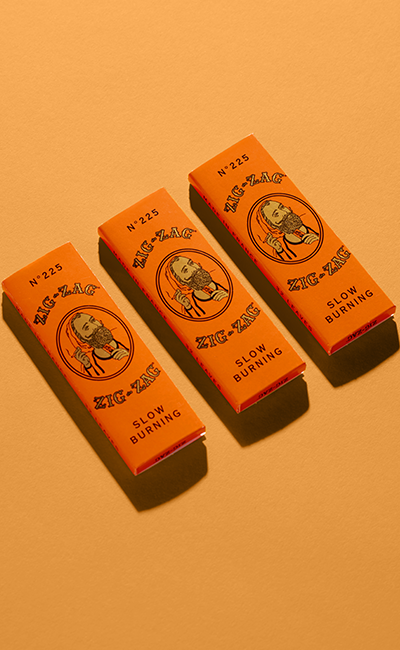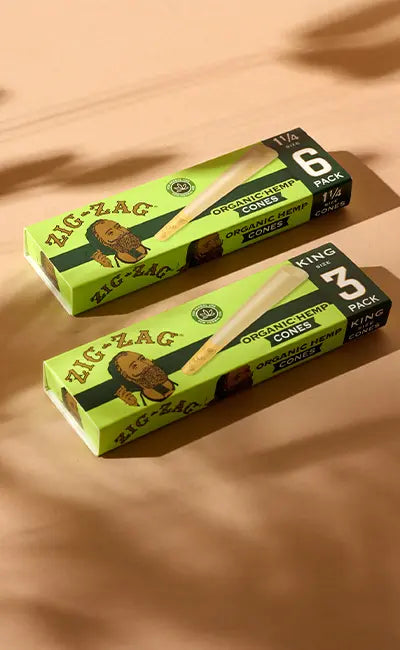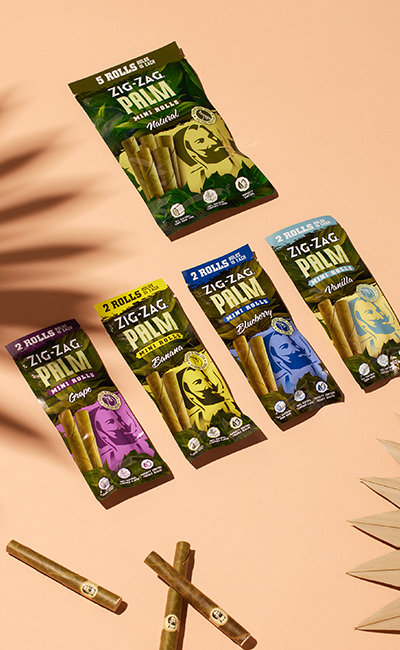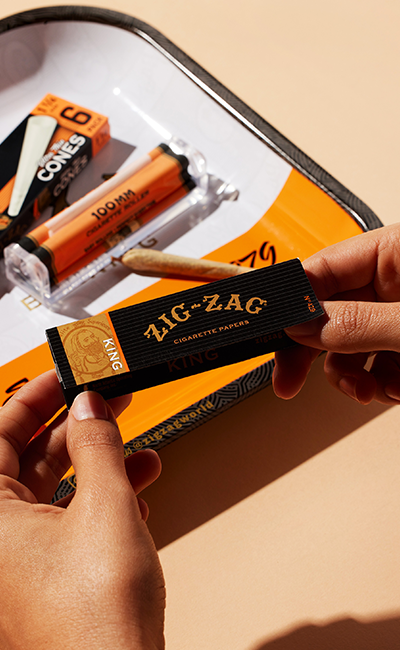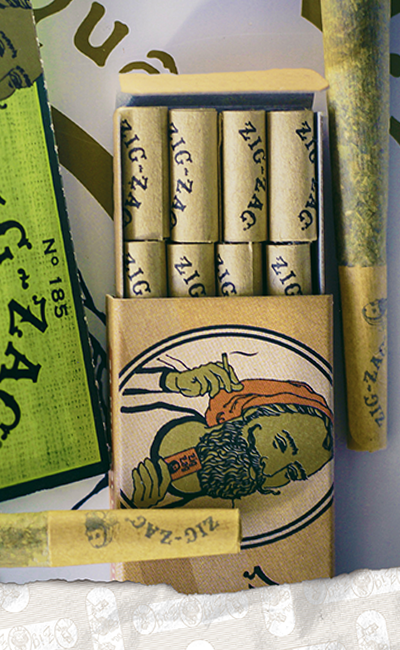Ultra-thin rolling papers have become a preferred choice for smoking enthusiasts who value a cleaner, purer smoking experience. These are designed to be significantly thinner than standard rolling papers, which contributes to a smoother and more enjoyable smoke. The thinness allows for minimal interference with the natural flavors of the tobacco or herbs, making each puff less about the paper and more about the contents. The appeal of
thin rolling papers for slow-burning is evident in their growing popularity among those who appreciate a leisurely and flavorful smoking session.
The Science Behind a Superior Burn
The Role of Paper Thickness in Burn Rate
The thickness of rolling papers plays a crucial role in how they burn. Ultra-thin ones are designed to be as slim as possible, significantly enhancing the burn quality compared to thicker alternatives. These burn more slowly and evenly, reducing the chances of uneven burning and providing a smoother smoking experience. This slow burn allows for a prolonged session, ideal for smokers prioritizing leisure and flavor over speed. Understanding this aspect is vital for those who seek a refined smoking session, making thin rolling papers a preferred choice for discerning users.
Maintain Even Combustion
One of the standout burn advantages of ultra-thin rolling papers is their ability to maintain even combustion. This characteristic is due to the minimal interference of the paper with the burning process, allowing the focus to remain on the material being smoked rather than the paper itself. The even burn reduces the occurrence of "runs" or "canoeing," where one side of the joint burns faster than the other.
Rolling papers with even burn provide a consistent experience that enhances enjoyment and efficiency by ensuring that the heat is distributed evenly across the surface.
Impact on Flavor and Smoke Quality
The thinness of high-quality ultra-thin rolling papers improves the burn rate and positively affects the flavor and overall smoke quality. Thicker papers can impart a papery taste to the smoke, overshadowing the natural flavors of the tobacco or herbs. In contrast, ultra-thin smoking papers are almost imperceptible in taste, allowing the pure flavor of the smoking material to shine through. This makes them an excellent choice for connoisseurs who appreciate the subtleties of aroma and taste in their smoking experience.
Why Slow-Burning Rolling Papers Enhance the Experience
The best rolling papers for a slow burn conserve your smoking material and provide a leisurely pace, making each session more relaxing and enjoyable. This slow combustion process is particularly beneficial during social gatherings, allowing the joint to be passed around without quick burnout, fostering a shared experience. Moreover, the burn consistency of thin rolling papers means less frequent relighting, which can disrupt the serene flow of a smoking session.
Materials and Manufacturing of Ultra-Thin Papers
Common Materials
Each of these materials brings unique properties that contribute to the overall quality and performance of the papers. Below is an in-depth look at each common material and its unique attributes:
-
Hemp Rolling Papers: Derived from the fibers of the hemp plant, these papers naturally possess strength and flexibility, which help prevent tearing even under challenging conditions such as high humidity. The inherent moisture resistance of hemp is particularly beneficial for users in damp climates, ensuring that the paper maintains its integrity without becoming overly soggy or fragile. In addition to their mechanical robustness, hemp papers are renowned for delivering a pure smoking experience. Their natural composition means they are typically free of harsh chemicals and additives, which allows the true flavor of the smoking material to shine through without interference.
-
Rice Rolling Papers: These are highly esteemed for their exceptional thinness and subtle performance, explicitly designed to enhance the natural flavor profile of the smoking material. Manufactured from finely processed rice fibers, these papers are almost transparent and are renowned for their ultra-lightweight texture. Their delicate structure allows for a slow, controlled burn that contributes to a more refined and extended smoking session, enabling users to appreciate the nuances of their herbs fully. The minimal interference from the paper itself is a significant advantage for purists who prefer the authentic taste of their smoking material, as rice papers do not impart any additional flavor.
-
Natural Fiber Papers: Natural fiber papers, crafted from materials such as flax and other plant fibers, offer a harmonious blend of the desirable qualities of hemp and rice papers. These papers are engineered to be exceptionally thin while retaining a surprising degree of strength and durability, resulting in a product that burns evenly and smoothly. Made from unbleached, minimally processed fibers, natural fiber papers emphasize purity and environmental responsibility, ensuring that no harmful chemicals alter the taste of the herb. Their gentle combustion process preserves the subtle flavors of the smoking material, making them an ideal choice for those who desire an authentic and unadulterated experience. The production methods for natural fiber papers focus on sustainable practices, often utilizing renewable resources that reduce the ecological footprint compared to conventional alternatives. Their fine texture and balanced burn rate offer a pleasing tactile experience, as the paper nearly disappears during use, leaving behind only the refined essence of the herb. The fusion of strength and delicacy in natural fiber papers allows for versatility in rolling techniques, accommodating both beginner and advanced users with equal ease.
Embracing these materials elevates the quality of the smoking ritual and supports a broader commitment to environmentally responsible practices in the rolling paper industry.
The Importance of Additive-Free Rolling Papers
To deliver the purest and most natural smoking experience,
premium rolling papers are often unbleached and free from any additives. This approach not only maintains the natural color and texture of the papers but also ensures that no external chemicals interfere with the taste and quality of the smoke. Smokers who choose these benefit from this purity, as it eliminates any potential health risks associated with inhaling burnt chemicals.
Precision Engineering for Rolling Paper Burn Efficiency
The manufacturing process involves precise engineering to ensure optimal thickness and porosity, which are crucial for maintaining burn efficiency. Precision extends to the physical properties of the papers, such as their tensile strength and ability to hold the smoking material without splitting. The engineering process often involves rigorous testing and quality control measures to consistently produce quality ultra-thin rolling papers that meet the high standards expected by users.
Innovations in Rolling Paper Technology
Recent advancements have significantly enhanced the functionality and user experience of
superior burning rolling papers. Innovations such as watermarked patterns and proprietary blends of natural materials help control the burn rate and ensure uniformity in each product. Technological enhancements refine the smoking experience while also pushing the boundaries of what traditional rolling papers can offer, providing users with a sophisticated choice in their smoking accessories.
Tips for Rolling with Ultra-Thin Papers
Handling Without Tearing
Thin rolling papers are delicate due to their ultra-thin design, which requires careful handling to avoid tears. When preparing to roll, you must ensure that your hands are dry and that you work on a clean, flat surface. Gently cradle the paper between your fingers, applying minimal pressure. The key is to be patient and precise, avoiding any rushed movements that could compromise the paper's integrity.
Techniques for Achieving a Perfectly Even Burn
Achieving a perfectly even burn is both an art and a science. The following techniques are essential for anyone looking to enhance their smoking experience through masterful rolling:
-
Grind Your Material Finely: For an even burn, the first step is to ensure that your smoking material is ground into a uniformly fine consistency. A meticulous grind is crucial because it facilitates an even distribution of heat and airflow throughout the roll. When the material is finely ground, it creates a homogenous mixture that burns uniformly, reducing hot spots or under-burned sections. Use a high-quality grinder to achieve this consistency, ensuring that no large chunks remain that could disrupt the burn rate. Fine particles allow for more efficient combustion by providing a larger surface area for the flame to interact with, resulting in a smoother, steadier burn. Additionally, a consistent grind can help maximize the herb's potency, as every puff extracts the optimal flavor and effect. Taking time during this step to sift out any stems or overly coarse fragments further improves the overall quality of the roll.
-
Distribute Evenly: Ensuring an even distribution of your ground material along the length of the best ultra-thin rolling papers is essential for a uniform burn. The process begins by carefully spreading the herb along the crease of the paper so that it is consistent from one end to the other. Uneven distribution can result in sections that are too densely packed or too sparse, causing uneven heat distribution during combustion—a phenomenon commonly known as “canoeing.” To avoid this, take a measured approach by lightly patting the herb to settle it uniformly and checking for any clumps or gaps. This step is pivotal because a balanced fill directly influences the airflow and the combustion rate of the joint. A well-distributed herb layer ensures that every part of the joint receives the same amount of oxygen and heat, which is crucial for achieving a slow, steady burn.
-
Roll Tightly, But Not Too Tight: Finding the perfect balance between a tight and a loose roll is an art that significantly impacts the burn quality of your joint. The roll must be compact enough to hold its shape and prevent the herb from spilling out, yet it should still allow for sufficient airflow to maintain an even burn. Over-compression can lead to restricted oxygen flow, causing the joint to burn unevenly or even go out prematurely, while a roll that is too loose may result in rapid, uneven combustion. To achieve the optimal balance, gently roll the paper around your evenly distributed herb and gradually apply pressure. As you roll, continuously check that the joint maintains a consistent density throughout its length. Experimenting with different pressures can help you identify the ideal tightness that preserves the structure without compromising the burn rate.
-
Use a Crutch or Filter: A well-crafted filter serves as a mouthpiece and offers crucial support by preventing the herb from escaping while providing a clear pathway for air. Construct the filter by folding a small piece of sturdy paper into an accordion shape and then rolling it into a compact cylinder that fits the joint’s opening. This small addition ensures that the end of the joint remains firm and enhances the draw by channeling air evenly through the roll. The filter helps to trap fine particles, ensuring that you enjoy every bit of your smoking material without interruption. It also plays a significant role in maintaining the joint’s overall shape, preventing it from collapsing or becoming misshapen during the rolling process.
-
Tamp Down Gently: After rolling your joint, a critical final step is to tamp down the herb gently to remove any lingering air pockets. Air gaps within the joint can lead to uneven burning, as the material may combust more quickly in less dense areas, resulting in an inconsistent flavor profile. Use a small, non-abrasive tool—such as a pen or specialized packing device—to lightly compress the herb from the open end. This gentle tampering ensures that the fill is evenly compacted, promoting a uniform burn rate throughout the entire joint. It is essential to apply just the right amount of pressure; too much can over-compress the material and hinder airflow, while too little may leave the joint loosely packed and prone to rapid combustion. The goal is to create a balanced density that maintains the joint's structure while still allowing for smooth, controlled burning. This final tamping process not only solidifies the roll but also acts as a final quality check, ensuring that the joint is ready for an optimal smoking session. By taking the time to tamp down gently and evenly, you ensure that the joint performs reliably, delivering consistent puffs that maximize flavor and potency.
-
Check the Seal: Verifying that the joint is properly sealed is an indispensable part of achieving an even burn. The sealing process involves ensuring that the adhesive strip has bonded completely along the length of the roll, leaving no gaps that could lead to air leakage or uneven combustion. A perfect seal is crucial because even small inconsistencies in the adhesive line can disrupt the burn, causing sections of the joint to burn too quickly. To check the seal, visually inspect the entire joint for any loose or unglued areas. Run your fingers gently along the seam to feel for any irregularities that may compromise the joint’s integrity.
-
Dry the Roll Properly: After sealing your joint, allow it to air dry in a controlled environment for a short period. Drying the roll properly helps to lock in the structure and ensures that the joint maintains a consistent burn from the first puff to the last. It is advisable to avoid lighting the joint immediately after rolling, as the residual moisture can interfere with the combustion dynamics. Allowing the joint to dry ensures that the paper achieves an optimal level of rigidity, promoting even heat distribution when lit.
Mastering these techniques is essential for those who value consistency and quality in their smoking experience.
Finding the right thin rolling paper for joints involves considering how each type complements your smoking style and preferences. Whether you prioritize flavor, burn rate, or environmental impact, there’s an ultra-thin paper designed to meet your needs. Experiment with different materials to discover which best enhances your smoking experience. You can improve your technique and consistently get a more pleasurable smoke by choosing the right paper.





